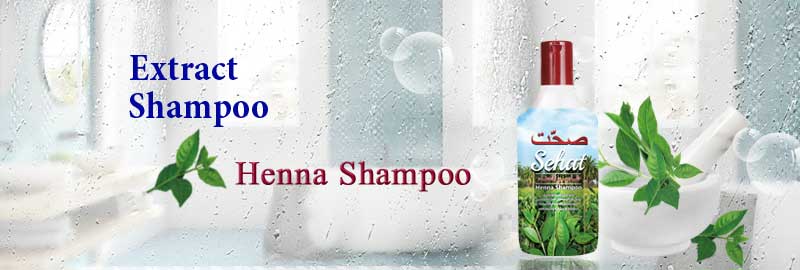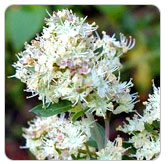
- Product Information
- Ingredients
- Secrets of Plants
Sehat Henna Shampoo is an herbal shampoo with henna extract and glycerin. Henna extract has antibacterial and antifungal properties. It gives freshness to the skin and scalp and protects the hair against sunlight. Glycerin is a moisturizer that makes the hair and scalp soft and silky and gives it manageability.
- Improves hair growth
- Henna improves skin condition and preventing skin diseases.
- Henna acts as moisturizer and anti-dandruff, strengthening hair root and stem.
- Henna acts as anti-inflammation and fungicide.
- Henna thickens your hair; repairs damaged hair, and leave it silky and shiny.
- With a pH-balanced formula
| Volume | Per carton |
| 25 ml | 192 |
| 300 ml | 24 |
| 1 L | 12 |
| Henna extract | Aqua | Sodiumlaurylethersulfate |
| Cocamidopropyl betaine | Coconut fatty Acid DEA | Glycerin |
| Sodium chloride | Citric acid | Perservative |
| EDTA | Triethanolamine Laureth Sulfate | شامپو Triethanolamine صحتh |
| Ingredients | ||

Henna
Lawsonia inermis
English: Henna
French: henne
Persian: hana
Henna tree is whitish grey with thorny branches. Its maximum height is 6 to 7 meters. Its leaf is elliptic with sharp tip; it has 2 to 3 cm. length and 1 cm. width. Its flowers are white or pink and are in form of cluster.
Useful part of Henna is its flower which can be used in form of powder or without any change.
Henna grows in a wide region of Africa and some other regions, sunny lands are needed for this purpose.
Its multiplication is done by its seed. Harvest begins after second or third year.
Chemical compound:
Henna leaf consists of Tannin, Gum, Pentose, Quinine, Flanoid, essence, Oily substances, and Resin. The most important substance is called Lavsun which is the main colorful substance in Henna. Lavsen is made in form of crystal prisms in Acetic acid and breaks down in 195 to 196 degrees. Lavsen has pharmacological features that are mentioned below:
It is used for coloring.
It has fungicide effects, especially on the kind of fungus that causes baldness.
It is anti-bacterial.
It reduces heartbeat by increasing constriction.
Henna consists of Manitol and Mucilage; Mucilage lets Henna leaf dissolve easily in water and turn into paste.
With compounding Lavsen and dihydroxy Acetone, lotions and creams are produced which protect skin against sun rays. Tannin and Tanic acid in Henna, as a constrictor, obstruct skin pores and reduces perspiration of scalp.
Uses of Henna:
- Henna has always been known as a natural color since long ago and is used in hygienic and cosmetic products.
- Henna in shampoos makes hair thicker and shiny.
- Henna extract is used in hair, face and body lotions and creams.
- Because of containing Tannin, Henna strengthens hair and scalp, and is used in shampoos and lotions.
- Henna fights dandruff and together with olive oil, it strengthens hair stem and root.
- Henna is fungicide and anti-inflammation and helps sensitive skin. These features of Henna are considered in both old and modern pharmaceutics.
- Henna is effective on sensitive dry skin as well as limp dry hair.
- Henna is used in curing, healing the cuts, treatment of burns, and skin inflammation.
- Iranian pharmacists suggest Henna flower oil for lightening skin color. This oil is produced by boiling Henna in olive oil.
- Henna leaf being wet with water is used for preventing skin diseases or curing wounds.
- Henna leaf is used as a moisturizer.
- In Iran, people use Henna to prevent perspiration or removing its odor. They also use it as a hair color.
- Henna powder is used for curing wounds and blisters.
- Henna flowers are used for cooling skin and are also used in perfumes.
- Henna powder which is used for coloring hair is mixture of Henna with powdered leaf of plants producing Indigo. If this mixture is applied, hair color darkens or changes to dark blue. If Henna is applied to hair but not any change of color is desired, acidity of Henna should reach up to 5.5 with addition of Buric Acid or Citric Acid or Adipic Acid.
- It is found that Henna root is helpful in curing wounds of mouth and gum.
- Henna has many usages in industry. It is used in fretting to paint white wood in Acajou. In some countries such as India and China Henna is used for painting wool and leather.
Henna is originally from Mediterranean, Asia, South and East of Africa, North Australia, India and Madagascar and also Eastern countries. Henna is panned in South of Iran, Baluchistan, Bam and Narmashir.
References:
1- Zargary- Ali, Medical Plants (second volume) 1370
2- Mirzayi- Pandora, Article about effects of Henna extract and powder.
3- Hair magazine-Hygienic and Cosmetic productions.






















